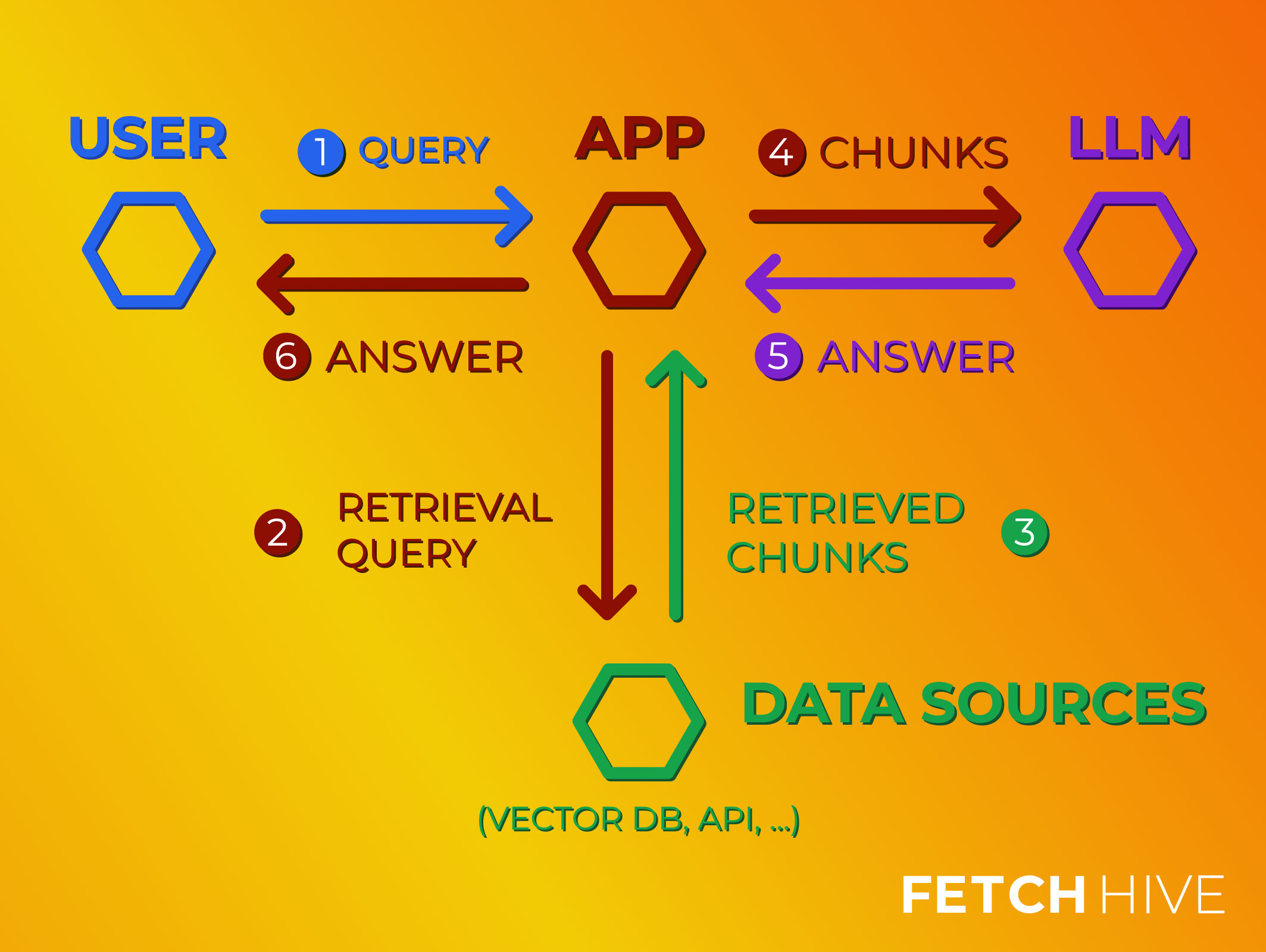Retrieval augmented generation systems have the power to transform businesses by lowering costs, improving decision making, enhancing accuracy, and reducing time wasted on repetitive tasks humans don't need to do…and it's not that hard to implement.
Imagine having your own personalized RAG system that could:
- Generate personalized responses for customer support and point customers to relevant information
- Automatically retrieve relevant documents for employees, managers, and customers
- Perform real-time data analysis to assist in decision making
- Instantly produce factually accurate reporting
- Optimize company processes using both current and historical data
- Improve product or service recommendations
- Automate complex tasks, freeing up your time to focus on what matters most (sleeping…)
And it's really not that complex at all. I've seen businesses benefit from implementing retrieval augmented generation systems in as little as 3-4 weeks.
This article will cover the best business use cases for RAG in a simple, straightforward manner with real-world examples of how retrieval augmented generation is changing businesses forever.
I'll also cover the basics of implementing your own RAG system and some tools that could help you along the way.
What is RAG?
Retrieval augmented generation (RAG) is a method of enhancing AI that allows large language models (LLMs) to access external data that is contextually relevant and up to date.
It combines natural language processing with an information retrieval mechanism to provide contextually relevant responses for users that are vastly superior to standard AI responses.
Here's a simpler way to think about retrieval augmented generation…
A typical AI tool can only work on the data it's been pre-trained on. For example, Chat-GPT is only trained up until a certain date and it's been trained on the entire internet.
It doesn't know your company data or have any knowledge of important things like customer feedback. If you wanted Chat-GPT to analyze sales data to forecast annual sales or retrieve and reference important documents, it wouldn't have the knowledge to do so.

With RAG, you now add all of that company data and implement a retrieval component so the LLM can access it. BOOM! Your AI system now has access to all of that information. Then, it combines the retrieval component with a generative system to create a better answer.
Here are a few examples of how businesses could use RAG systems:
- Customer service chatbots can gain access to a customer's purchase history and previous chat logs. With this information, it could provide more personalized responses and recommendations.
- A health clinic could use RAG to provide better healthcare. A RAG AI model could access the patient's history, medical condition, and the latest research to provide more accurate diagnoses or treatment recommendations.
- A blogger or journalist could use RAG to pull the latest, most relevant information from the web and provide up-to-date stats, facts, and findings to their readership.
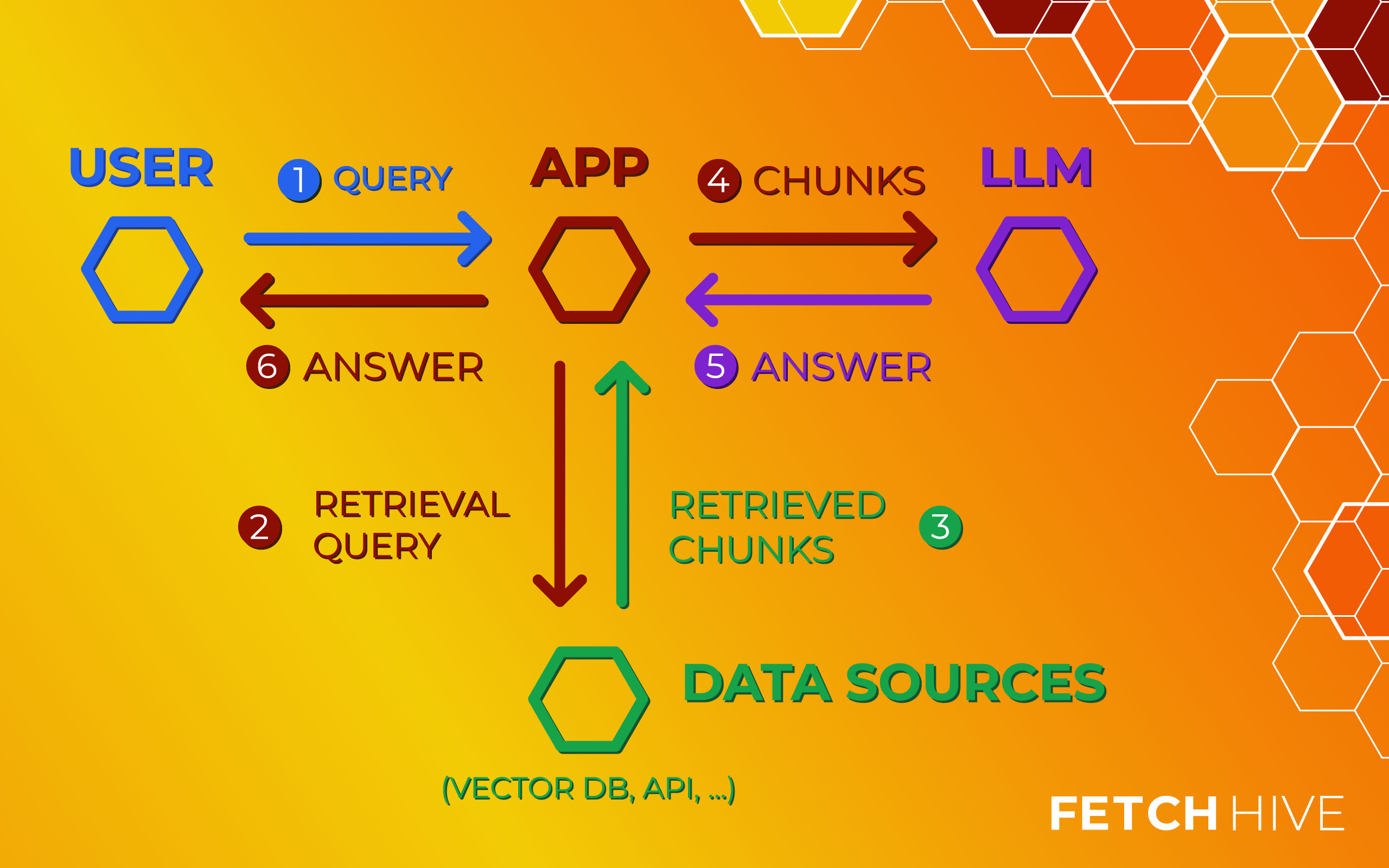
7 High-Impact Use Cases of RAG in The Real-World
RAG has transformative benefits for businesses, especially in sectors like customer service, employee onboarding, and content creation.
Imagine being able to deliver accurate, relevant, and personalized responses instantly, all while reducing costs, improving efficiency, and enhancing outcomes.
I want to cover some real-world use cases of RAG, so you can see how the RAG approach is already changing businesses.
Conversational Agents (Chatbots/AI Assistants)
Of all the use cases for RAG, conversational agents are the one you're most familiar with.
In case you didn't know, AI assistants are those annoying chatbots that ask "how can I help you?", when you're trying to text what you think is a real human support agent.
A RAG-enabled assistant can access a customer's chat history, purchasing history, and even browsing habits to generate responses that help the customer better.
They also can:
- Collect information
- Automate repetitive tasks
- Improve sales/satisfaction by automatically offering upsells, cross promotions, refunds, etc.
Imagine that one of your customers was angry, and they messaged you "hey, where is my package? I ordered it last week!". A typical bot would only say "please check for updates in your account" whereas a RAG-enabled AI assistant could say "hey, Tom! Sorry, but your order went to Norway instead. It will now arrive at (address) on (date)".
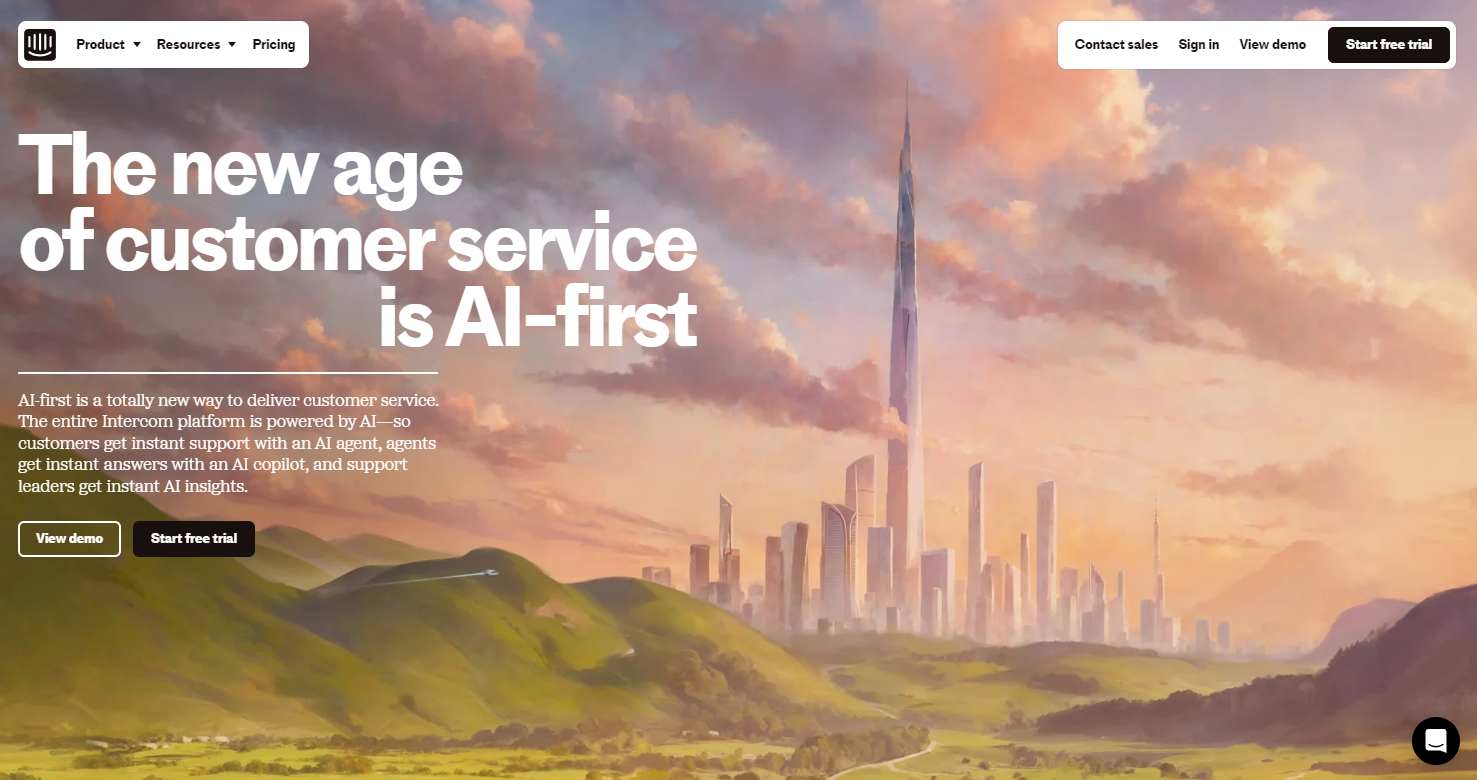
Enterprise Search
Massive, evil corporations often have internal search engines so employees can find important answers or documents without wasting a manager's time. Normally, they'd waste a lot of time looking for those answers and maybe even get the wrong information due to out-of-date documents.
Retrieval augmented generation is completely changing enterprise search as we speak.
Now, companies like Microsoft and Amazon are offering RAG-enhanced enterprise search that surfaces the proper documents and most recent data. Plus, these generative models can answer questions themselves. For example, an employee could ask "what's my paid time off policy for the holiday season?".
Boom, question answered. And the manager didn't have to waste their time saying "nobody gets time off here" like they used to.
More Accurate Search Engine Results
RAG models are transforming search to better answer user queries.
Web search engines, when combined with information retrieval systems, can synthesize the retrieved data and answer the question rather than just provide documents or links.
Let me give you an example.
Say you wanted to analyze a competitor's financial performance in a given quarter compared to your own. With traditional search, you would type something like "company X's performance in (year)", and it would retrieve a document for you with the data (if it existed). Then, you'd have to implement your data and that new data into the AI and ask it to compare.
With RAG models, it can not only retrieve those documents, it can actually answer the query for you in real-time. It might say "competitor X grew 12% last year due to their implementation of RAG systems. In comparison, you only grew 8%, and that's mostly likely due to x, y, and z reasons".
Content Creation And Summarization
RAG (Retrieval-Augmented Generation) significantly improves content creation and summarization by retrieving real-time, relevant information from external databases and providing concise summaries when needed. This allows writers to generate more accurate, in-depth content quickly.
Without RAG, you'd have to do A LOT of manual research and sift through multiple documents, which is a pain in the you know what.
RAG automates the most annoying parts of writing by pulling pertinent data and creating coherent summaries in a fraction of the time. For example, if you had to summarize a lengthy report or multiple articles, RAG could extract the key points and generate a clear, concise summary.
Research
RAG is an absolute beast at researching. It can instantly sift through mountains of relevant data, web pages, and other data sources with contextual understanding and provide contextually relevant information and answers instantly.
It's currently being utilized for healthcare, legal research, and enterprise decision making to reduce workloads and improve outcomes.
For example, a lawyer might need specific precedents on how courts have ruled on "intellectual property disputes involving digital media." Instead of manually searching through legal databases for hours, the lawyer can use a RAG-powered system to search: "What are key rulings on intellectual property disputes in digital media over the last 5 years?"
The system would then sift through case documents and court rulings to provide an accurate summarization of previous rulings that the lawyer could use to argue their case.
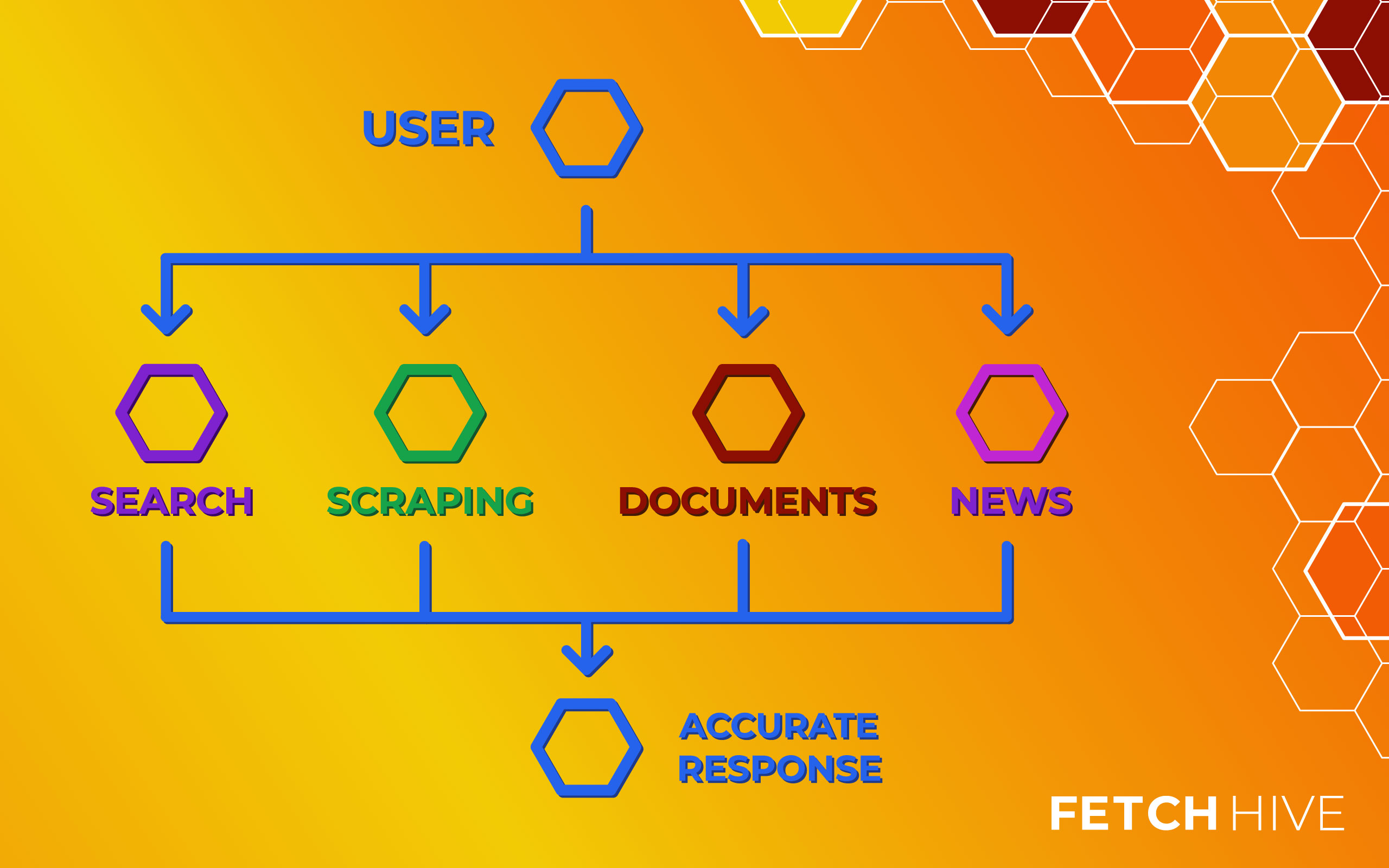
E-Commerce Product Recommendations
Retrieval augmented generation has the ability to drastically improve e-commerce store conversion rates when implemented properly.
By retrieving relevant information, then combining it with user behavior and purchasing history, it can recommend the right products, at the right time, to the right type of user…all 100% automatically.
Imagine this: Say, someone is browsing your hiking gear store and they're looking at things like hiking boots and tents.
As they're browsing your store, your RAG retrieval system can retrieve real-time data on their browsing habits and generate personalized recommendations (e.g, if they're browsing lightweight backpacks, it can also recommend lightweight shoes). It can even pull promotional or stock information to make sure it's recommending a product that's likely to convert.
Check This Out: RAG can even generate a list of items that act as a "checklist" of sorts. Say your customer is browsing for beginner hiking shoes. Your RAG model could generate "must-have beginner's gear" and list out all of the products they should take on their first serious hike. It's wild!
Data Analysis And Decision Making
RAG's ability to produce outputs based on factually correct and current information makes it a huge advantage for fast-paced industries like healthcare, finance, and online marketing, where out-of-date information can destroy a business.
Since RAG is connected to external knowledge bases and capable of creating contextual answers to user's queries, it can be used to analyze data and improve decision making.
One example is a financial analyst can use RAG to gather up-to-date market reports, economic trends, and competitor information, all of which allow them to make more informed forecasting and investment decisions.
The Benefits And Challenges of Retrieval Augmented Generation For Businesses
RAG's ability to scour up to date information, synthesize real world knowledge, and produce context aware responses based on user preferences is having a transformative effect on businesses.
Companies as we speak are using RAG to reduce their expenditure and workload while improving efficiency, productivity, and outcomes.
A few of the benefits of RAG for business are:
- Factual Accuracy: Access to vector databases and other sources of information ensures all responses are as accurate as possible.
- Personalization: RAG can generate text that is more personalized for each user, since it can have access to that person's previous interactions with the company (and other data).
- Contextual Awareness: RAG models produce better answers to a user's query, because it's aware of the context of the input prompt.
- Reduced Costs: Retrieval augmented generation can reduce the number of employees you need. At the very least, it reduces the amount of time they waste on repetitive tasks.
- Increased Efficiency: With RAG, people no longer have to waste time fine tuning their AI tools or sifting through vast amounts of data to find answers. Your RAG tool can produce generated text with relevant facts instantly.

Challenges of RAG
Some of the challenges of RAG include scalability, integration, and data quality.
The more you prepare yourself for these challenges and learn the solutions, the better your business outcomes will be.
A few of the challenges of RAG include:
- Data Quality: Your RAG is only as good as the data it's trained on. If you use poor quality data or out-of-date data, it's going to lead to severe issues very quickly. I recommend using quality databases only and cleaning and filtering data before using it.
- Scalability: Scaling RAG systems can be tricky, especially with so many moving parts. As you grow, the sheer amount of data can become overwhelming.
- Integration: RAG combines two distinct processes: information retrieval and natural language generation. Integrating both components requires a sophisticated architecture that can handle the retrieval of relevant data and combine it with language models to produce accurate results.
How to Use Fetch Hive to Create Your Own RAG Agents to Improve Efficiency And Reduce Spending
I developed Fetch Hive to help techy and non-techy people (like market researchers, product managers, and agency consultants, for example) collaborate on generative AI tools without all of the back and forth, account switching, and headaches that normally come with generative AI.
You can build your own RAG AI agents in minutes that instantly understand and respond to your data even if you have no coding experience or technical expertise.
With it, you can centralize all of your documents, websites, and datasets in one intuitive platform, and eliminate headaches like scattered data and inconsistent prompt outputs.
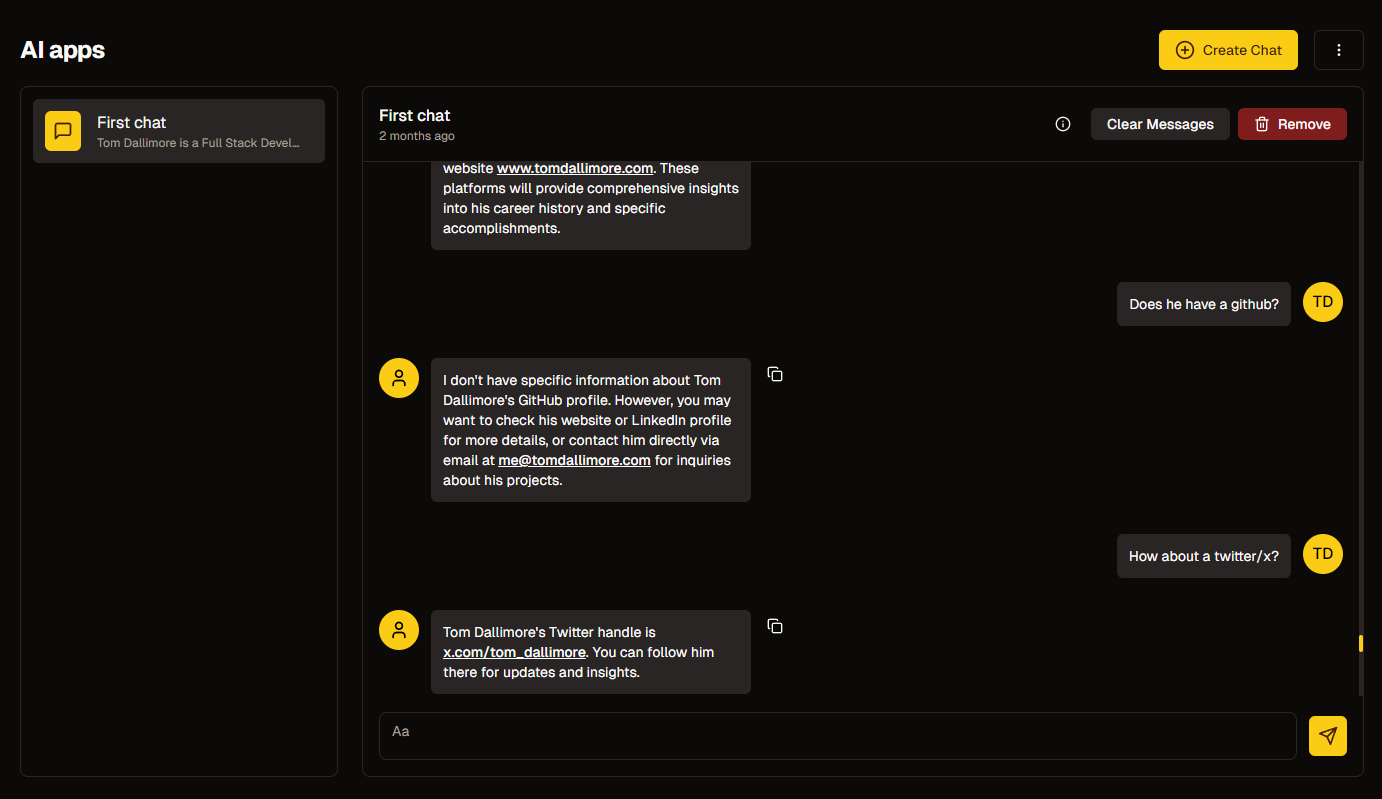
All you have to do is create an agent, choose a dataset, and it will send you answers based on your input prompts.
If you're interested, you can start using it for free today. You'll have instant access to RAG, workflow, fine-tuning, and prompting features that you can continue to access at any time, even if your credits run out.
Give it a try. It's free!

